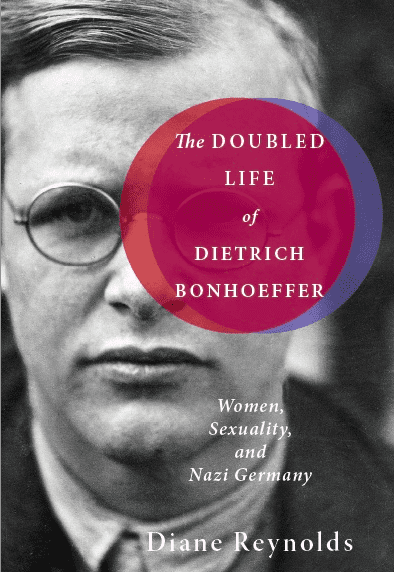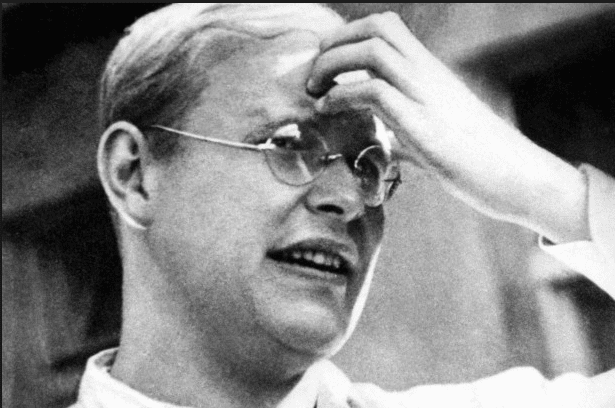 I have been with a wide variety of theologians and pastors who love Dietrich Bonhoeffer. In fact, Bonhoeffer seems to be on every one’s side. Is there a “real” Bonhoeffer beyond the ownership? We might wonder where he’d locate himself in our theological spectrum but that’s speculation. Andrew Root, in his new book on Bonhoeffer, called Bonhoeffer as Youth Worker: A Theological Vision for Discipleship and Life Together, sketches what Stephen Haynes called the “Bonhoeffer phenomenon.” That is, he sketched the various groups who thought they had ownership of that altogether interesting, if at times elusive, German theologian.
I have been with a wide variety of theologians and pastors who love Dietrich Bonhoeffer. In fact, Bonhoeffer seems to be on every one’s side. Is there a “real” Bonhoeffer beyond the ownership? We might wonder where he’d locate himself in our theological spectrum but that’s speculation. Andrew Root, in his new book on Bonhoeffer, called Bonhoeffer as Youth Worker: A Theological Vision for Discipleship and Life Together, sketches what Stephen Haynes called the “Bonhoeffer phenomenon.” That is, he sketched the various groups who thought they had ownership of that altogether interesting, if at times elusive, German theologian.
Three views of Bonhoeffer (plus one):
1. The Revolutionaries: “They pounced on certain phrases and thoughts in Bonhoeffer to support their own position. Most particularly, Bonhoeffer’s conception of “religionless Christianity” caught their attention, making Bonhoeffer the face of radical (anti-)Christianity. Haynes states, “For radicals Bonhoeffer is a ‘seer’—a man born out of time who perceived the future with uncanny prescience” (13).
When I was a college student Bonhoeffer and radical revolution was the name of the game, and I had more than associate wonder aloud to me if Bonhoeffer did not become an atheist. I found myself amazed people would think like that of him. As a student I read his The Cost of Discipleship (now called more accurately Discipleship) and so the atheism theory jarred me. As a senior, however, I read The Letters and Papers from Prison and began to wonder what he was talking about when he spoke of “religionless Christianity” and “the world come of age.” So, this is one reading of Bonhoeffer: this view, I understand, is now advocated by Peter Rollins. (Root says this of Rollins’ view: “Perhaps the most popular of these is Peter Rollins, who so deeply misreads Bonhoeffer along these lines that he admits disdain for the earlier historical and intellectual elements of Bonhoeffer’s thought.” [13 n. 3])
The Bonhoeffer of Discipleship and Life Together is something Bonhoeffer himself abandoned; they were the early Bonhoeffer.
2. The Liberals: “This group was enamored with Bonhoeffer’s attention to social justice, exploring particularly Bonhoeffer’s resistance to National Socialism and his advocacy for the Jews. But, Haynes explains, these historical realities are not the central biographical lens through which they see Bonhoeffer. They instead draw on the themes of resistance, themes of resistance, advocacy, and the call for justice, centered on Bonhoeffer’s experience in New York City, and particularly in Harlem in 1930-31” (14).
Root knows Bonhoeffer has roots in German Protestant liberalism; he was a student of Harnack, not to ignore also a family friend. But Root is right to point out that Bonhoeffer broke with liberalism as a student at liberal-theology-Berlin when he discovered Barth, and Seeberg his mentor at Berlin knew the tensions with Barth/Bonhoeffer at Berlin. Barth’s target of criticism was Berlin! And Bonhoeffer found Union Theol Seminary’s theology severely lacking. It was all justice and activism.
3. The Conservatives: If the revolutionaries like Letters and Papers from Prison, and the Liberals his spirituality in Negro spirituals, the conservatives have fastened onto his Discipleship and Life Together. “Bonhoeffer is a hero for conservatives because he not only spoke boldly of following Jesus but also did so—into the hands of his executor” (17). None other than Dobson saw in Bonhoeffer a path for evangelicals in the public sector.
Metaxas follows this line. Here is what Root says of Metaxas: “… which I find so flawed and earnest to paint Bonhoeffer as a conservative (not possessing the openness of Bethge’s work) that I cannot follow him in any way, for to do so would be to foreclose on one of the above interpretations” (18 n. 13).
4. Plus One: Root pursues Bonhoeffer not so much through his precise theological location on the spectrum but through his pastoral theology, and in particular, he traces Bonhoeffer through the lens of his youth ministry theological turn. I hope you read this book — it’s a good one on how pastoral theology is done.
Root is convinced readers of Bonhoeffer have ignored approaching him through the lens of his pastoral ministry to youth.










